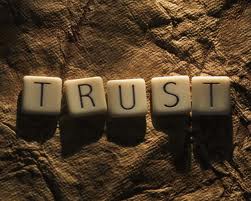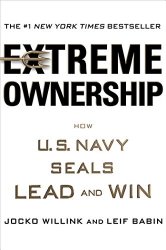 If you haven’t already done it, read my original series of articles on trust.
If you haven’t already done it, read my original series of articles on trust.
Here are links to each: Part I, Part II and Part III.
Then come right back here for the bonus materials and article below.
Already caught up? Here are two big bonuses. First, I have a list of other materials and resources worth reviewing/buying, and using in your own development and team training.
Next, I’ve put together a set of 6 More Tips For Building and Maintaining Trust. I’ve included them down below.
After the article , just scroll down to see the links to a few resources.
So what more can we do to trigger trust?
6 More Ways To Build, Inspire, & Maintain Trust
If you’re interested in building more trust in your team and with clients and prospects, here are six more action steps and places to begin:
1. Demonstrating Trust — If you want to create a trusting work environment, you have to begin by demonstrating trust in your team and in your clients. Sharing a “secret” a “personal flaw or fault” a “mistake you’ve made” or something that you “generally don’t discuss” but that is appropriate to the situation does help to build trust. The words “Just between us….” have the power to trigger trust. But don’t blow it by betraying another person’s confidence – which instead diminishes and inhibits trust.
For example, an admission about something related to the conversation discreetly informs the client or team member that you trust them. “Just between us, I once made that same mistake and it was quite a while before I had the courage to admit it and to fix it. But when I did…” Establishing elaborate and firm/company-wide rules, and policies to protect against the bad behavior of a few “bad actors” sends the wrong message to the vast majority of people in your organization who need and deserve to be trusted. Focus instead on hiring people of integrity and on good on-boarding and training with clarity about your expectations. Yes. You can and should have SOPs – Standard Operating Procedures – and legal advisers will make you have written policies on some issues – but trust your team to help you to create and revise them. Trust them to violate them when facts and circumstances require it.
But make sure that they know to tell you when they have departed from the agreed upon rules – you may learn even more! Want an example? Well, we’re booked way ahead (sometimes months) and generally, when a prospect or client is demanding that we drop everything because of a non-emergency or an emergency of his or her own making, we don’t necessarily accommodate them. (Of course we’ve made this clear right from the start). But leave it up to your team members to decide how far they want to go in accommodating their client needs and circumstances you may not have anticipated, then make sure that they have a way of alerting you to departures from the SOPs and why they might need to be modified. As for building trust with clients, start focusing not only your marketing but also your team training on what the clients really want, the problems they truly want to solve and on clarifying what they want and “deserve” from you and your team on a consistent and ongoing basis. I’ll bet that up until now you’ve been focused on what you know that they need and what they think that they want. That may be a very different and less effective focus.
2. Sharing “Commander’s Intent”. “Commander’s intent” means not only sharing what you want them to do but also why you want it to be done or to be done in a certain way. You reveal and really clarify the underlying strategic objective. One of the best ways to build a sense of trust in people within and outside of your practice and to clarify the commander’s intent is by sharing advanced, “confidential”, important and strategic information. Providing people with more complete information and a more complete sense of the WHY communicates trust and a sense of “we’re in this together.” It helps people think more broadly about the organization and the inter-relationships of various groups, resources, and longer term/strategic goals. Again, it also indirectly says to the client or team member that you trust them with this information. And that makes it easier for them to trust you.
3. Telling It Straight (but in some cases “indirectly straight”) — Study after study has shown that the number one quality that people say want in a leader is “integrity” (what that really means to each person is worth asking and considering as well). People want to follow someone they trust. Someone who “walks the talk”. Business leaders who tell it straight, who are open and honest – even about bad news- develop the trust essential for strong, long-term relationships. However, don’t use this as an excuse for being abrupt or unkind. There’s a dichotomy and balancing act here. Let’s face it, leading and building trust can be complicated but that’s not an excuse not to try. If it were easy everyone could run a company or practice. But this skill, and learning that balance between clarity and rudeness, gives you an unfair advantage in business and in life.
4. Providing Regular Feedback/Contact — Make sure that, as a leader who deserves trust, you schedule and hold regular progress-check meetings with staff and with clients/customers. Make it part of your SOPs. In dealing with your team, this will allow you to catch and to deal with problems before they become major issues. They don’t need to be long. They can be by phone or Skype. But make sure you set an agreement in advance and follow through. For customers/clients, make sure that you clarify expectations and stay in touch. Send newsletters, alerts, emails, and update correspondence so that they know you have their best interests in mind. Tell them early in the relationship that you’ll do this and then follow through. Trust is built AND maintained. And, this on-going communication can result in additional purchase, the acquisition of great intelligence and in referrals. Finally, some of this can be easily automated using auto responders, carefully selected videos (do you ever ask clients what they’d like to hear more about and how they’d like to get updates?). You can also use social media for clients who prefer that channel as a way of receiving public information.
5. Resolving Concerns Head On and With The Input of Others – Resolve concerns, head on, by putting challenges on the table and giving people an opportunity to influence the resolution process. When you expand your team’s involvement and influence, there is more “buy-in” because people are less likely to feel they are being controlled. This builds trust faster and increases your credibility. It also brings more perspectives to the table and your team members may have better data or knowledge. When you solve a customer’s problem in a way that makes them feel that they were well treated they continue to trust you (and to refer to you). So empower people at all levels to solve client/customer problems and teach them how to find out what the client or customer really needs to maintain trust and to feel well cared for. This takes some thought and tracking but will also pay big dividends in happier clients, patients or customers, more retention, and more and better referrals.
6. Admitting Mistakes and Taking The Blame — An apology can be an effective way to correct a mistake and restore the trust needed for a good relationship. But in many organizations, employees and managers are conditioned to hide mistakes because it’s not acceptable to make them. That just leads to bigger problems. Leaders who admit mistakes when they are wrong are not seen as weak—they are seen as having integrity and being trustworthy. And, when others in the organization see this behavior they too will take leadership responsibility. Extreme Ownership by Jocko Willink and Leif Babin is a great resource on the power of this aspect of trust and leadership.
Conclusion: Trust in both personal and professional relationships is a valuable but delicate and perishable commodity. While it’s complicated and hard, building trust a valuable investment and the foundation of all solid and healthy business and personal relationships. In building and maintaining trust, your actions can speak much louder than words. Ideally, make sure to align them and make promises (implicitly and explicitly) that you can actually keep or exceed. The bad news? Trust can take a long time to build and each person has his or her own test for trust, but at the same time, can be destroyed by a single action or misconception. The good news? The rules principles, and practices above will rapidly accelerate the building AND maintaining of trust. And once you have achieved a certain level of trust, business transactions and relationships are faster, better and more profitable. It is more fulfilling for all parties and when you do make a small mistake (as we all do) then you’ll be forgiven more quickly. Finally, trust makes for bigger and better referrals of even better clients as it removes the fear.
Enjoy being happen, more trustworthy and more profitable. Dave Frees
(Persuasion and Influence Course) Persuasion2Profit
(Live Video Programs) www.facebook.com/InTop?form
(Podcast) https://itunes.apple.com/us/podcast/in-top-form-podcast/id1209872004?mt=2
(Dave Publishes More Free Resources Here) Click here to follow me on Twitter
(And Here) Click here to follow me on Facebook
BONUS TRUST MATERIALS FROM MY RESEARCH, TRAINING & PRACTICE:
A SHORT LIST inspired by Scott Adams (the author/cartoonist) 
EXTREME OWNERSHIP: HOW NAVY SEALS LEAD AND WIN By Jocko Willink and Leif Babin. 
Want great tips on business, sales, marketing, profitability and leadership?
Join us for the The In Top Form Podcast https://itunes.apple.com/us/podcast/
in-top-form-podcast/id1209872004?mt=2
Click here to follow me on Twitter 
Click here to follow me on Facebook
WARNING – To save you some time I have links to some of the resources I’ve used and respect. To support the blog and to bring you this content, some are “affiliate links”.
If you are personally opposed to either me or the blog, you can always find the products on your own. Enjoy!
 Success Technologies
Success Technologies

